Colorado-based Yeti Cycles is a brand with a rich racing history. In fact, the first production Yeti frame in 1985 was called the F.R.O., an acronym for “For Racing Only”. And, according to the Yeti website, “Since 1985, racing has fueled our very existence”, a statement backed up by a scroll through their bike history page which chronicles the evolution of their bikes over the years, and in many ways, the sport itself.
So, it has seemed a bit odd to me, and I’m sure plenty of others, that Yeti hasn’t had a full-blown cross-country race bike in their lineup for the past several years. Well, that all changes today with the launch of the new Yeti ASR, a high-performance XC race machine meant to go head-to-head with the best in the business and compete at the highest level.
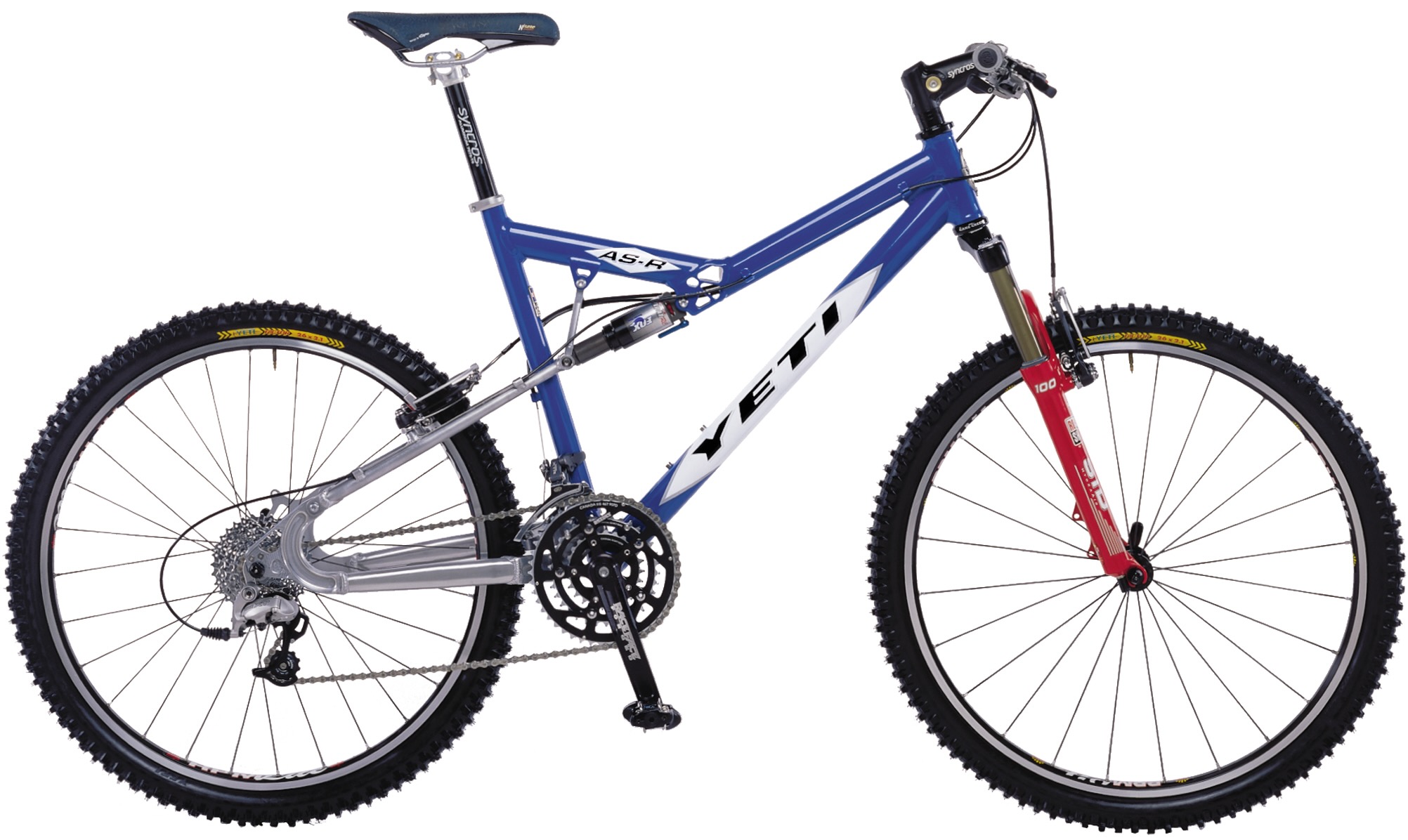
If the name ASR sounds familiar, that’s because the brand has rebooted the name from one of their most popular bikes of all time. The first ASR came out in 2000 and went through multiple iterations over the years. For example, Yeti started using flex stays on the ASR in 2003, made the first carbon fiber version in 2009, and continued making incremental improvements until the ASR was eventually phased out when they launched the SB100 in 2018.
Why is Yeti jumping back into the XC game now?
In lieu of an in-person media launch event, I jumped on a video call with Yeti’s design, engineering, and product team and they walked me through everything about the new ASR. According to the folks at Yeti, a proper XC bike was something they felt was missing from their line, so they embarked on one of their most ambitious projects ever, creating the lightest full-suspension bike in their history. They told me that while the SB100 and the SB115 that followed were relatively lightweight short-travel bikes, the Switch Infinity suspension design meant that they weren’t competitively light enough to be pure race bikes. Ultimately, they wanted to make a new bike that was capable of winning at the World Cup level.
Yeti ASR Frame Design
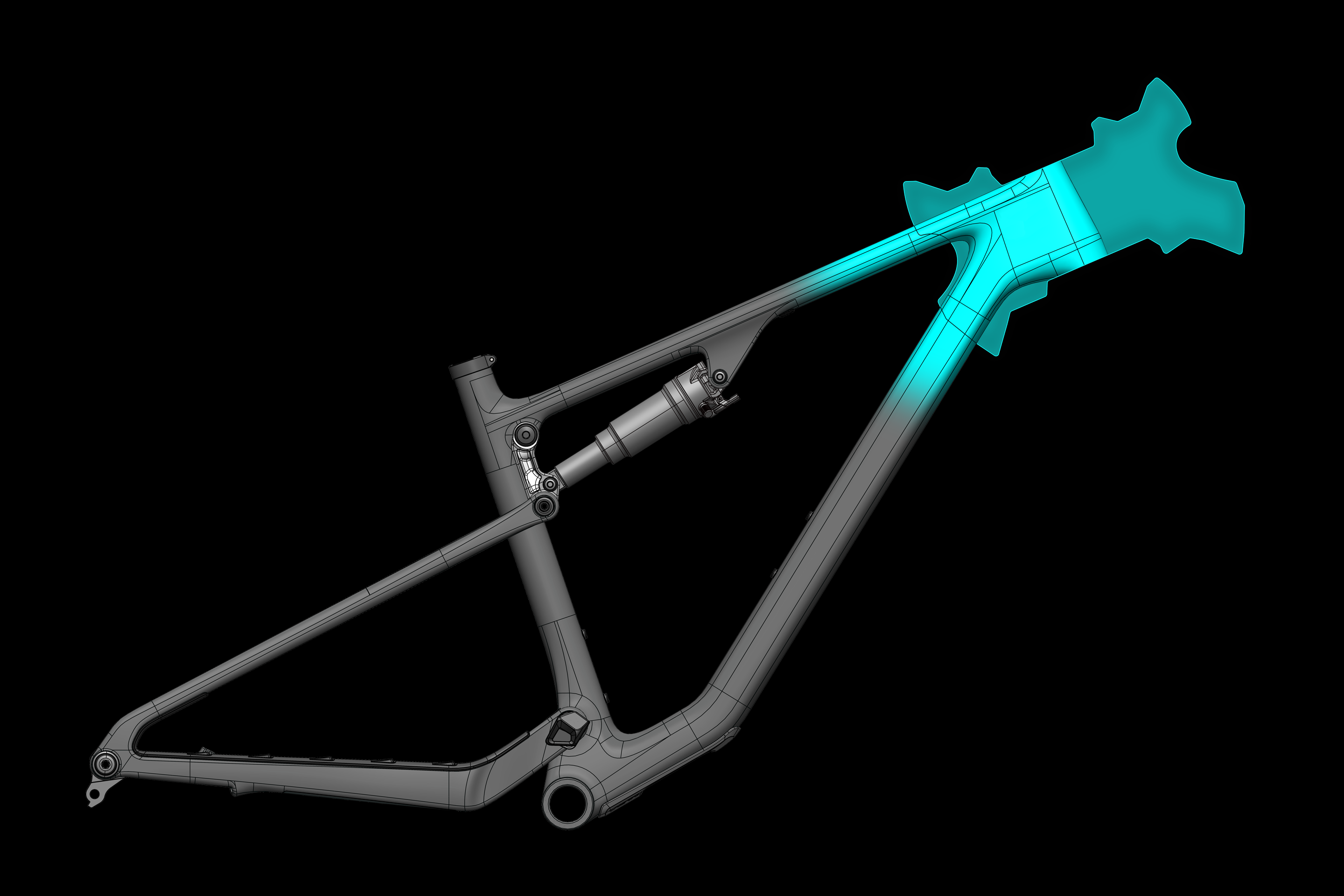
Starting with the frame, the main goal was to make it as light as possible while maintaining strength and specific ride characteristics. To do this, the team used in-depth carbon construction analysis tools to determine the most efficient construction possible that reduced redundant carbon, and therefore, weight, throughout the layup. They did this by using “custom ply shapes, critical material choice, intelligent draping methods, and smooth transitions between every ply”, along with placing pivots strategically by using existing stout structures in the frame to reduce the “solid carbon” needed to reinforce pivot points.
I’m told they went through 36 different layups during development before settling on a final. They also chased weight in the design of the link, using 7075 aluminum that is intricately sculpted to remove excess material, and they even created a custom rear axle to shave grams even further. This results in a frame that is, in fact, impressively light. The T-Series Wireless frame I’ve been testing weighs in at a claimed 1,448 grams (no shock, size M), or 1,813 grams with the SIDLuxe Ultimate Flight Attendant shock. The T-Series Wired frames are a claimed 1,552 grams, and C-Series frames come in at 1,727 grams (no shock, size M).
Each size frame, XS-XL, gets its own dedicated layup to maintain the consistency of desired stiffness characteristics across all sizes. Other important priorities in the design of the frame include room for two water bottles within the front triangle and internal routing for suspension lockouts on all frames. All frames have a hangarless interface for use with T-type (Transmission) derailleurs or a Universal Derailleur Hangar (UDH) and the drivetrain of your choice. The frames accept a custom, proprietary chain guide and have clearance for 28-36t chainrings (up to 38t on size M-XL), along with clearance for up to 2.4-inch tires (on 30mm internal diameter rims). Additionally, for ease of maintenance, there is no headset cable routing and the frame uses threaded bottom brackets. They also come with an integrated downtube protector and a small rear fender to keep debris out of the gap by the lower pivot.
Suspension Design
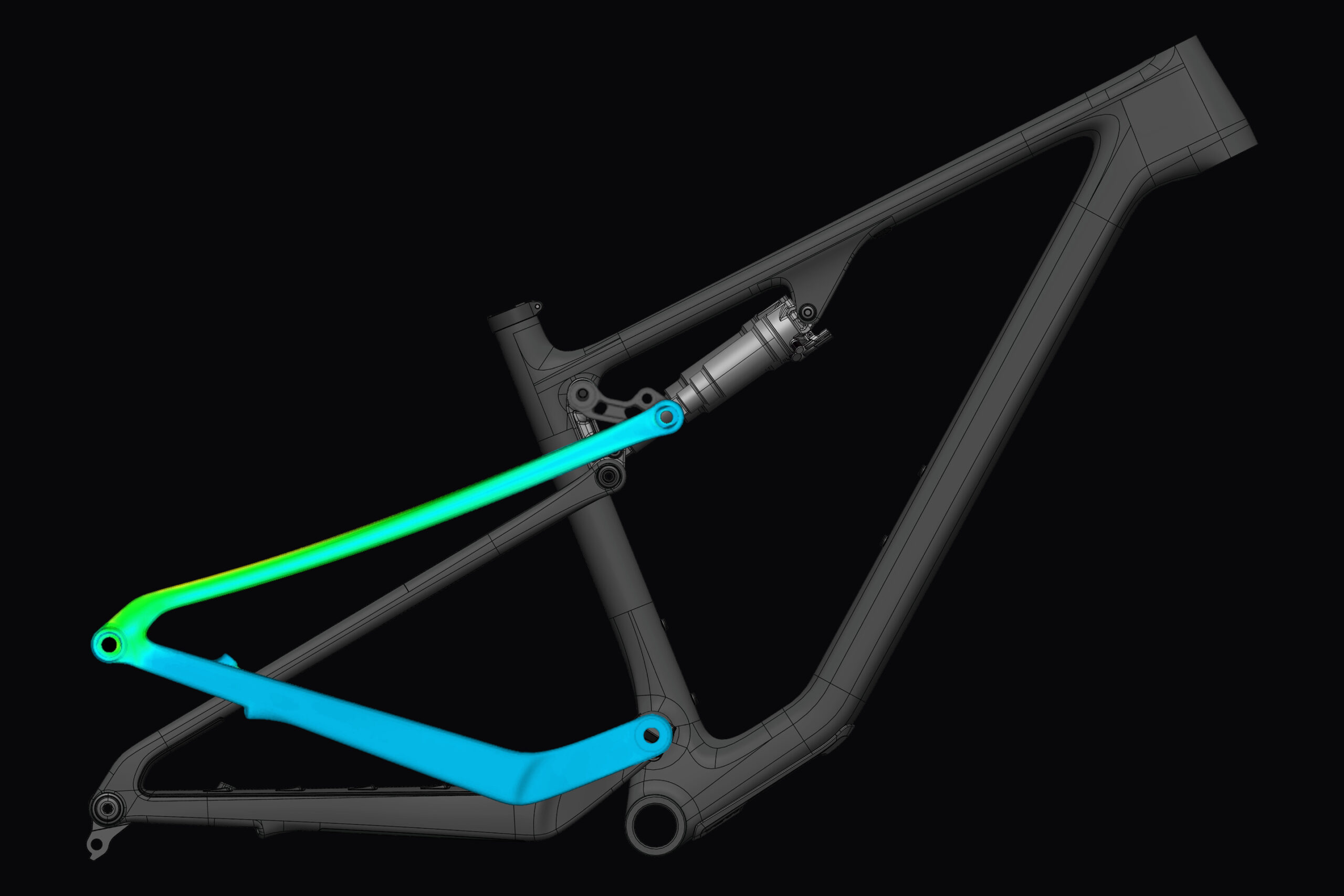
One of the more notable aspects of the ASR is moving back to a more traditional suspension layout in the form of a single pivot design with flex stays. Not only is this a proven design for the application, but it significantly reduces both complexity and weight (compared to their Switch Infinity), and Yeti has experience using them since 2003 on previous versions of the ASR.
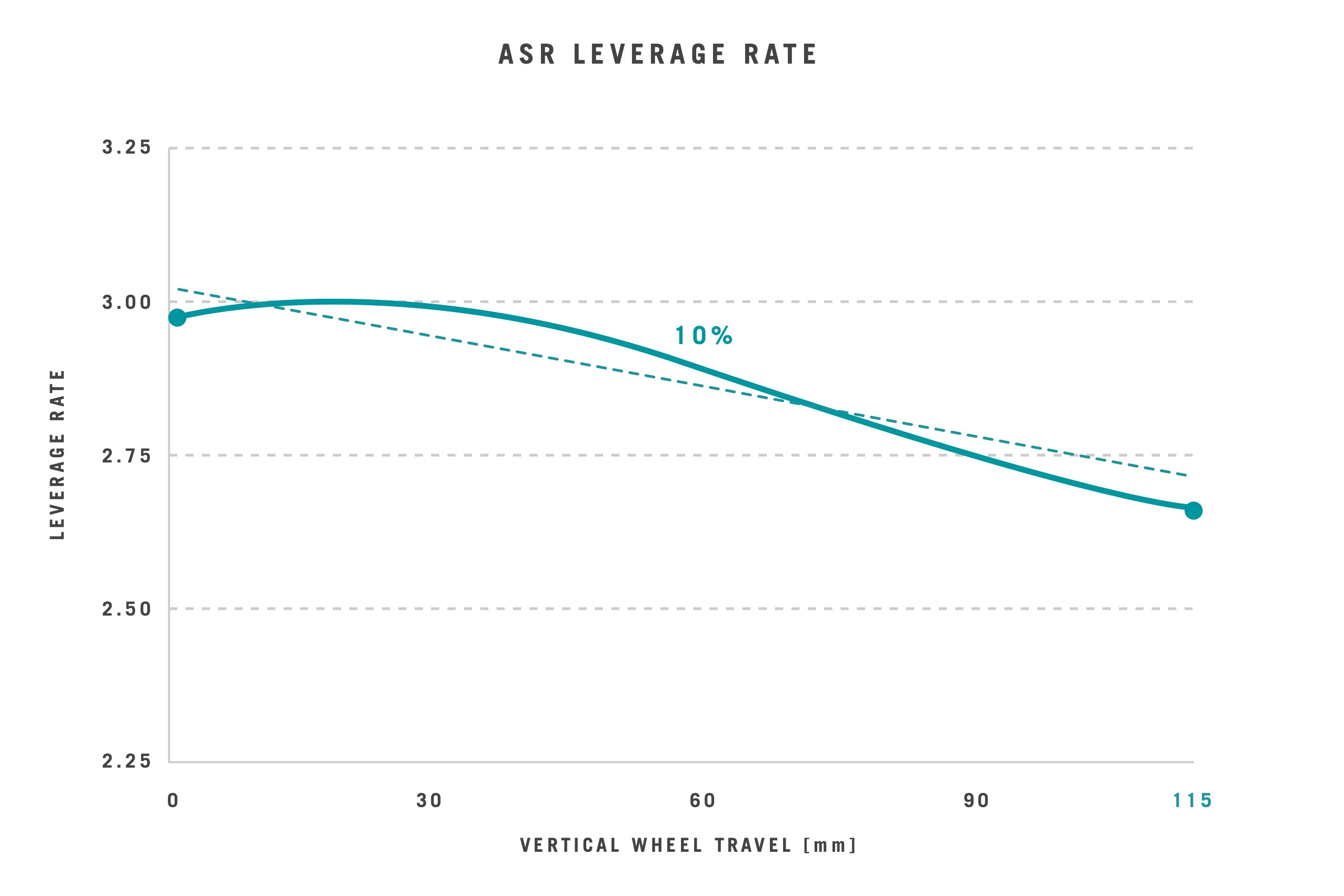
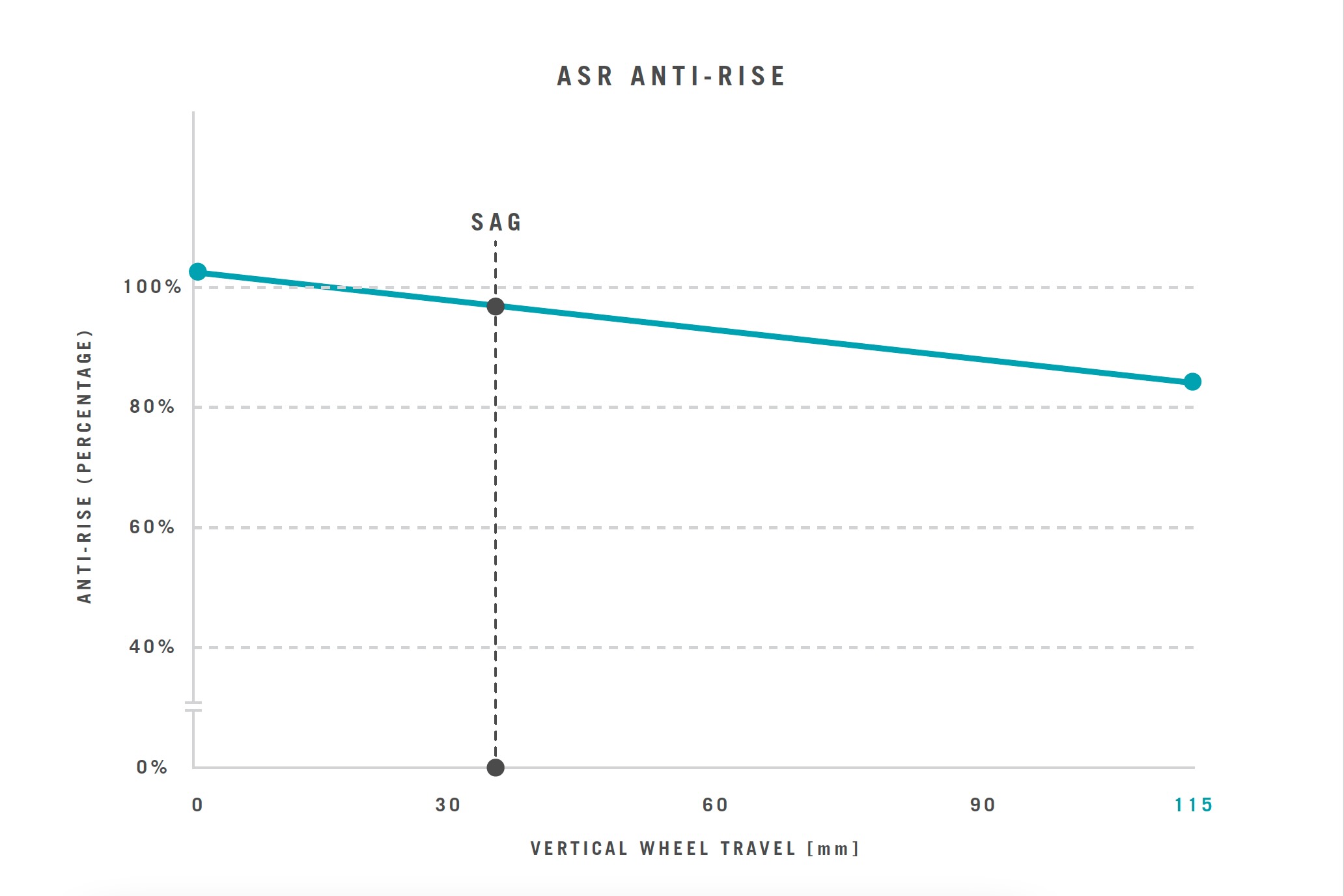
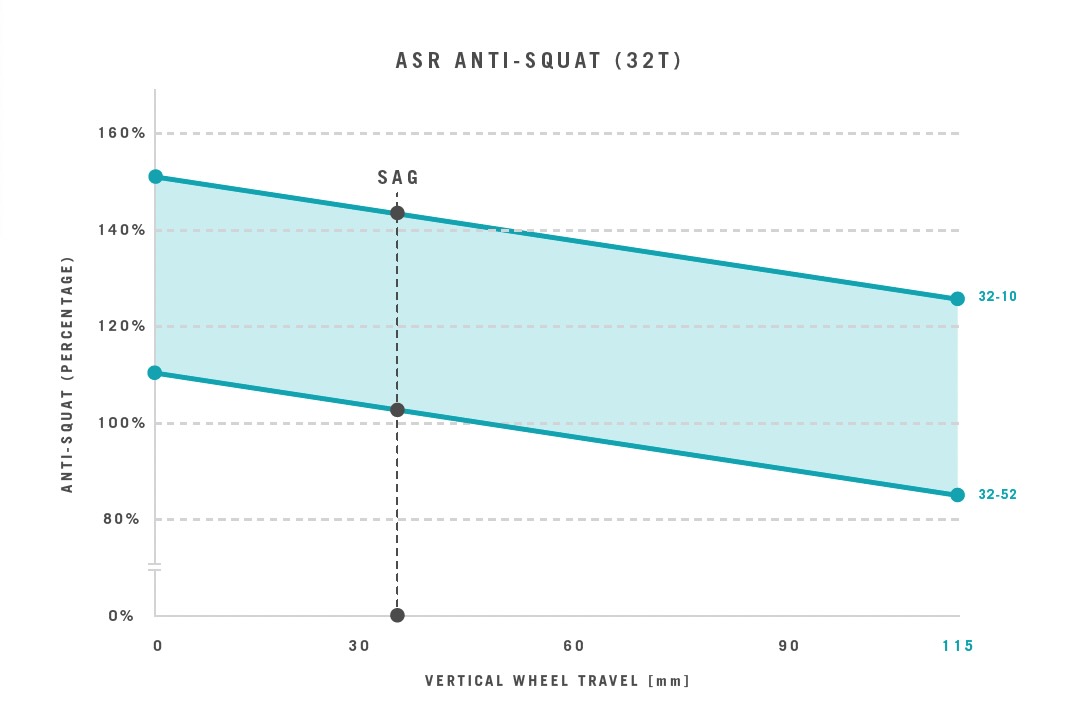
The new ASR has 115mm of rear wheel travel that’s been optimized for the desired kinematics to deliver 100% usable travel. The rear suspension is designed to have a near-linear leverage rate with 10% progression. They chose to use a 40mm stroke shock to achieve their desired compression ratios, along with developing custom stack and volume architecture to achieve their desired performance characteristics. That’s paired with 120mm of fork travel to handle the rigors of the increasingly technical and demanding cross-country courses.
Geometry
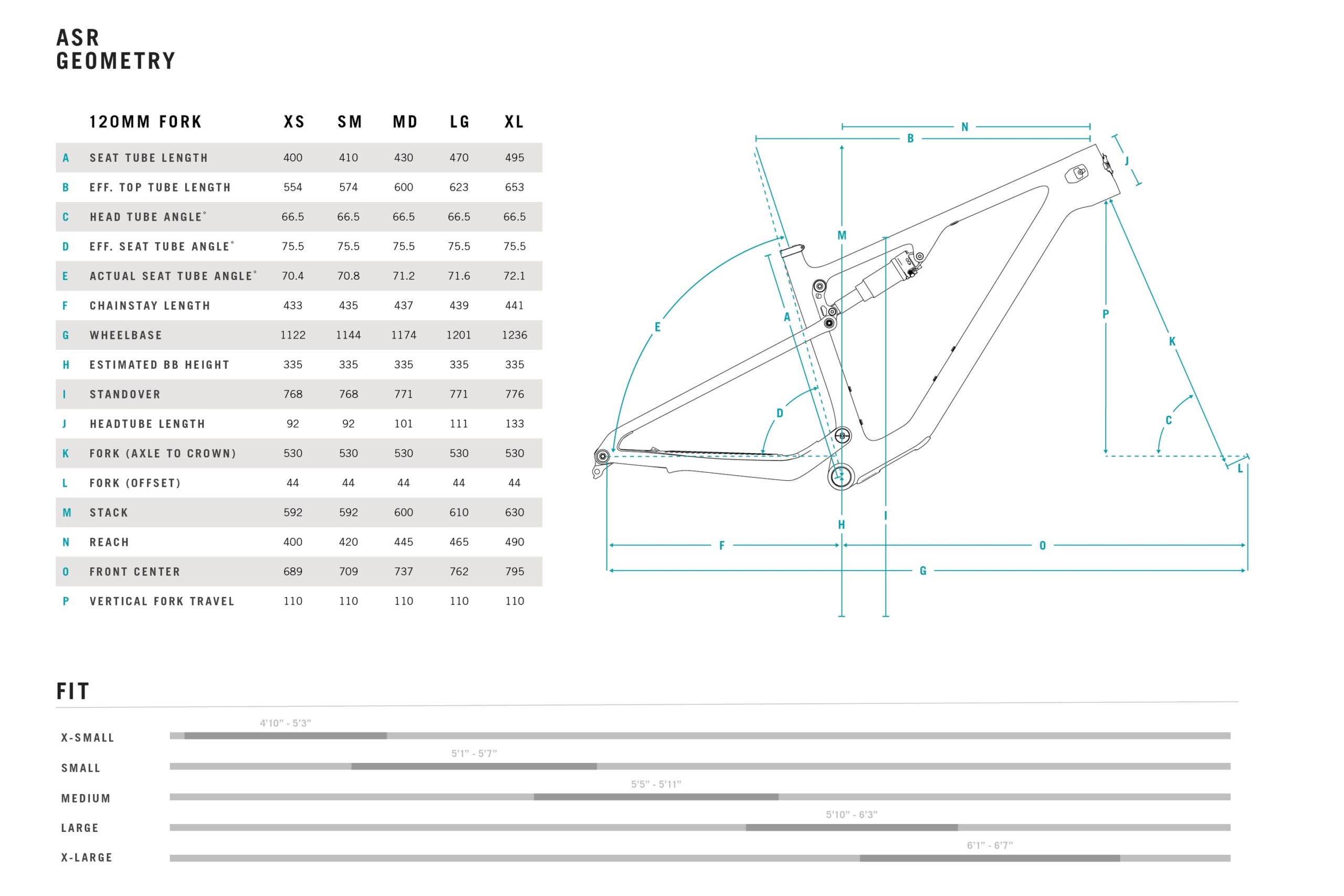
Geometry-wise, the goal was balancing it for racing on modern cross-country courses. This includes a 66.5° head tube angle, size-specific rear center/chainstay lengths for balanced weight distribution, and a low bottom bracket for enhanced stability at speed and confident handling. Additionally, effective seat tube angles stay the same across all sizes, but actual STA gets steeper as sizes increase to keep taller riders from “feeling off the back”. While not exactly into “down-country” territory, the geometry is most definitely up-to-date for true cross-country racing.
Frame Options
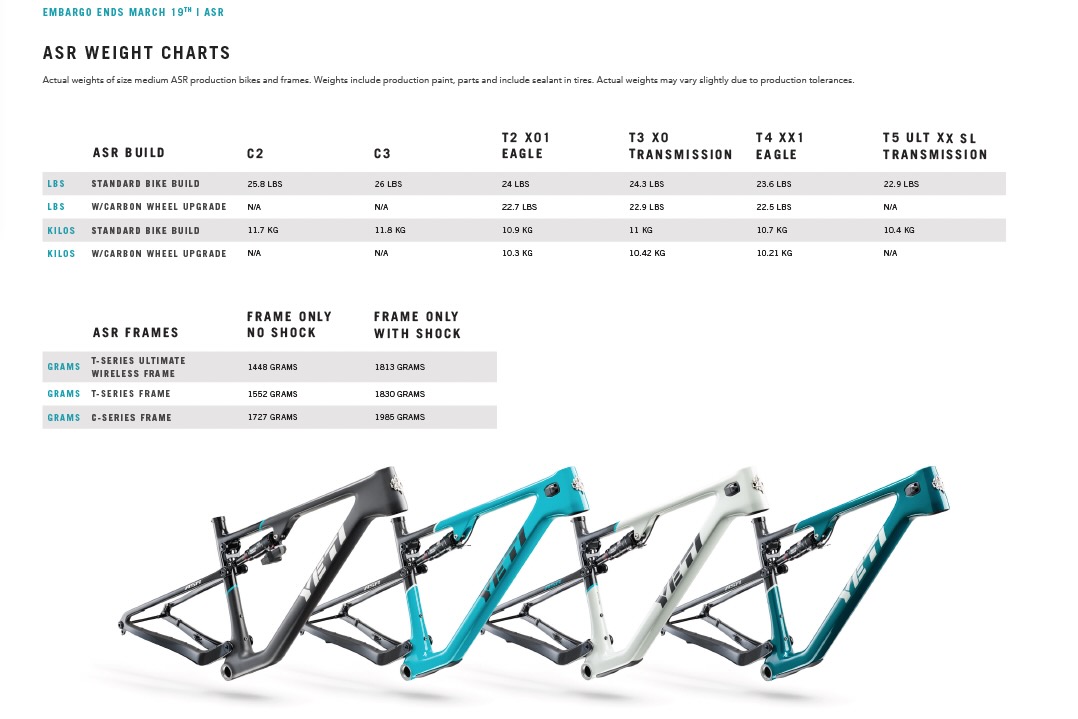
The Yeti ASR is offered in six complete builds that span three different frame constructions and as a T-Series Wired frame-only (with SIDLuxe Ultimate 3P shock and 3P wired lockout included) for $4,000. The three frame options include the top-of-the-line T-Series Wireless model that I’ve been testing with the T5 Ultimate XX SL Transmission build that is intended for use with wireless drivetrains only. This frame foregoes derailleur cable routing in favor of weight savings and comes in a startlingly light weight of 1,448 grams (frame only, size M). This frame only comes in the stealthy black/raw carbon color with the shiny silver Yeti logo.
The primary difference between the Wireless frame mentioned above and the T-Series Wired frames is the addition of configurable derailleur cable ports with clamped closures to keep cables tight and tidy. These frames do not have guided tube-in-tube cable routing to keep weight to a minimum. The T-Series Wired frames weigh in at a claimed 1,552 grams (no shock, size M) and are available as a frame only (with shock) for a custom build.
The C-Series frames are slightly heavier and are used for the two least expensive builds in the line. These frames also feature the same configurable cable ports but also have tube-in-tube internal routing. The claimed weight of 1,727 grams (no shock, size M) is still pretty darn lightweight.
Both the T-Series Wired frames and the C-Series frames come in three color options including classic Yeti Turquoise, Greyhound, and Spruce.
Builds and Pricing
The product team at Yeti also said they had a goal of equipping every complete build, ranging in price from $5,600 to $13,500, with components that are race-ready right out of the box. For the T-Series builds, this includes subtle touches like super-light Bike Yoke BarKeeper stems and seatpost clamps, remote suspension lockouts (Twistloc to reduce bar clutter for the non-FA builds), and Race Face Next SL handlebars. They also offer both wireless and wired drivetrain options to suit varying preferences, and options to upgrade the T-Series builds to DT Swiss XRC 1200 carbon wheels (+ $2,000) or the C-Series builds to Ultimate Suspension with Twistloc remotes (+ $600). All builds come with 30mm internal width wheels (wider than the norm for XC) for the added air volume, increased contact patch, and the benefits that go along with that.
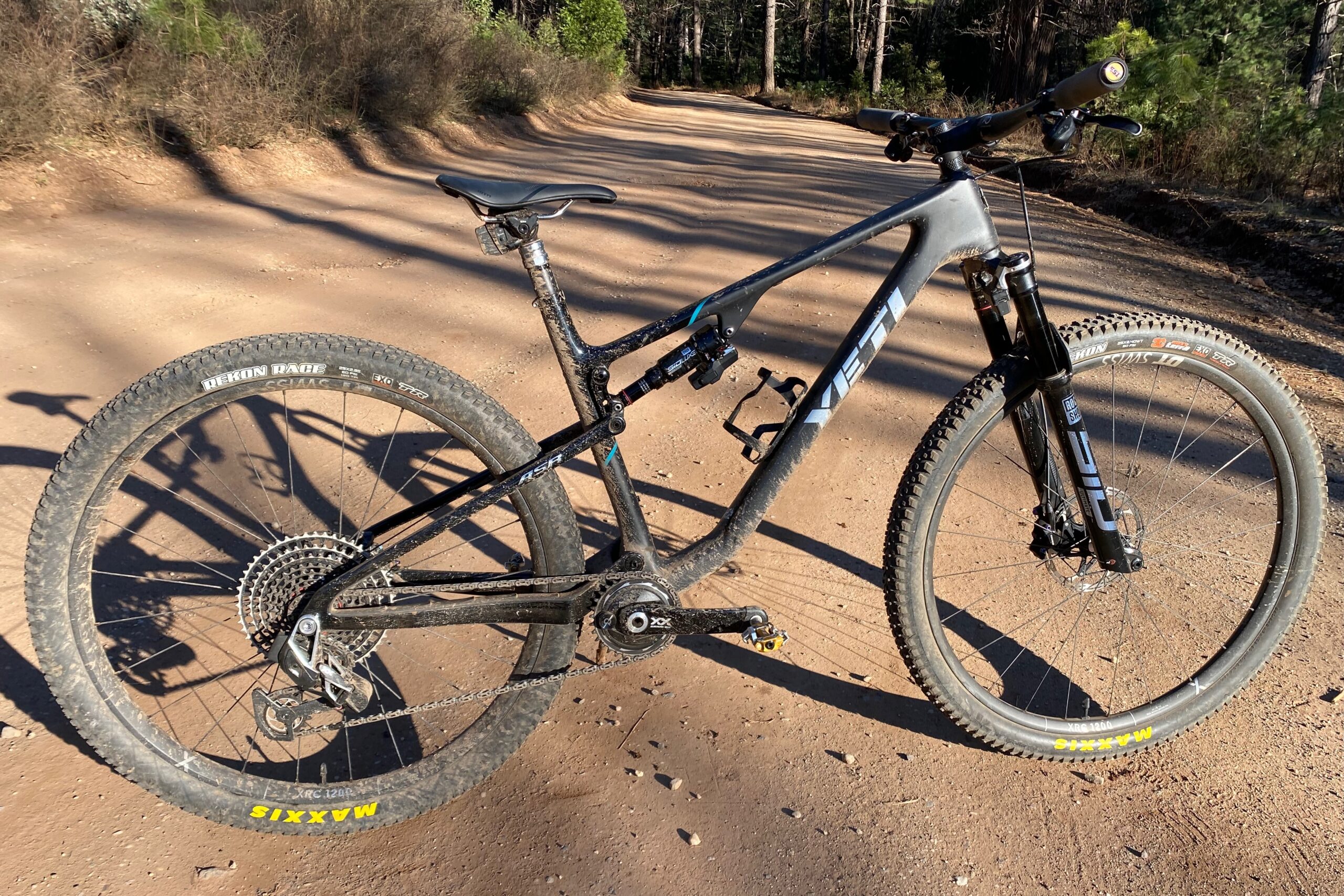
The top-of-the-line ASR build, and the one that I’ve been riding for the past few weeks, is the T5 Ultimate XX SL Transmission which retails for $13,900. This bike is built around the T-Series Wireless frame and comes equipped with a build that is focused entirely on performance and/or weight savings. Yes, this bike is very expensive, but it comes with top-of-the-line everything and is actually competitively priced among similar options (the new Specialized Epic 8 S-Works goes for $14,500), but still, there’s no denying it’s expensive and will likely draw the ire of plenty of folks.
That said, this build features the brand-new RockShox Flight Attendant XC suspension package, as well as all of the other associated AXS parts and a Quarq power meter which all work together as a system. This build also comes with the soon-to-be-launched DT Swiss XRC 1200 carbon wheels which weigh in at just 1,303 grams for the set, along with SRAM Level Ultimate brakes and Centerline X rotors. Even more shocking, is that my size large test bike came with a 170mm travel AXS dropper, and still only weighs 23 lbs (measured)!
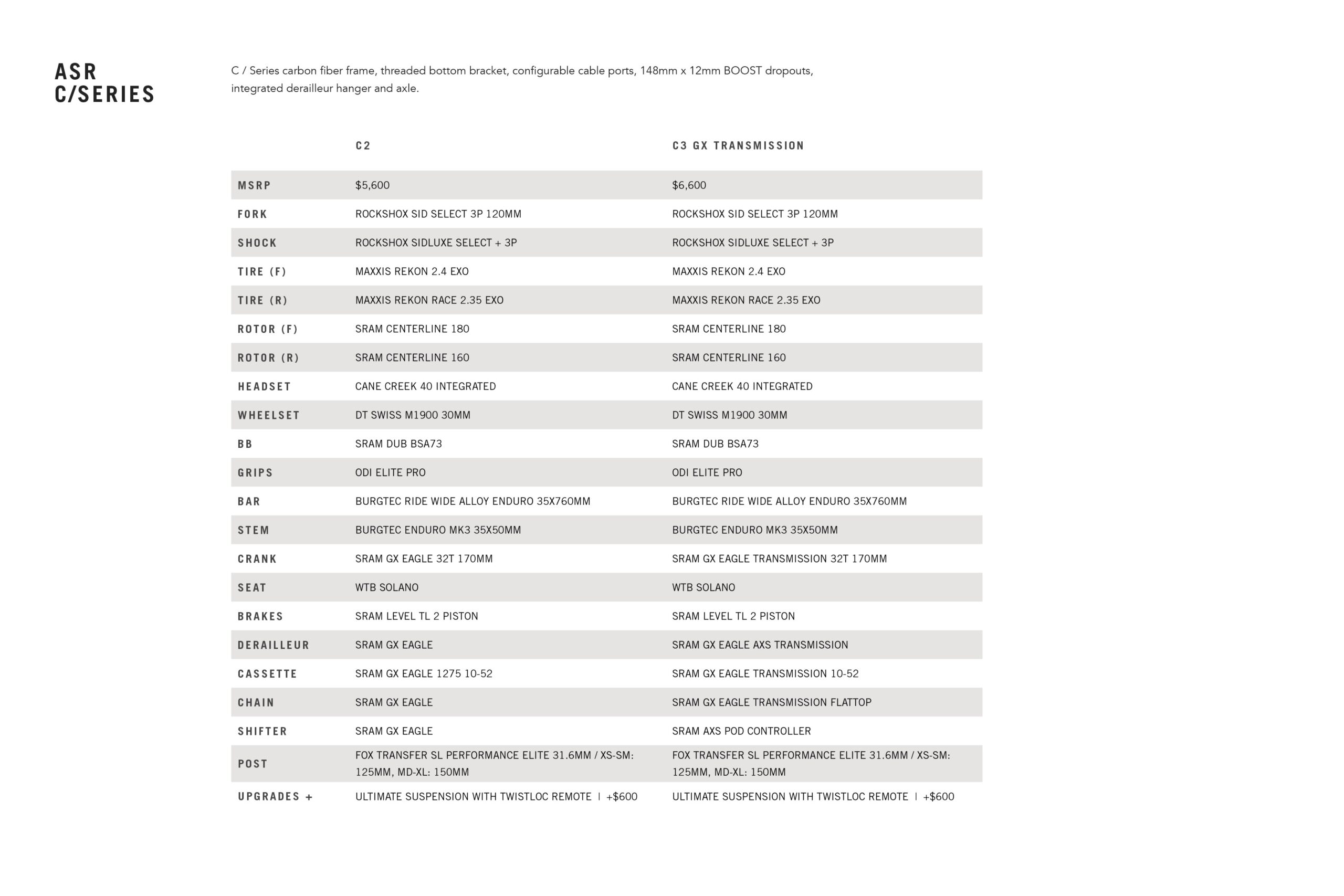
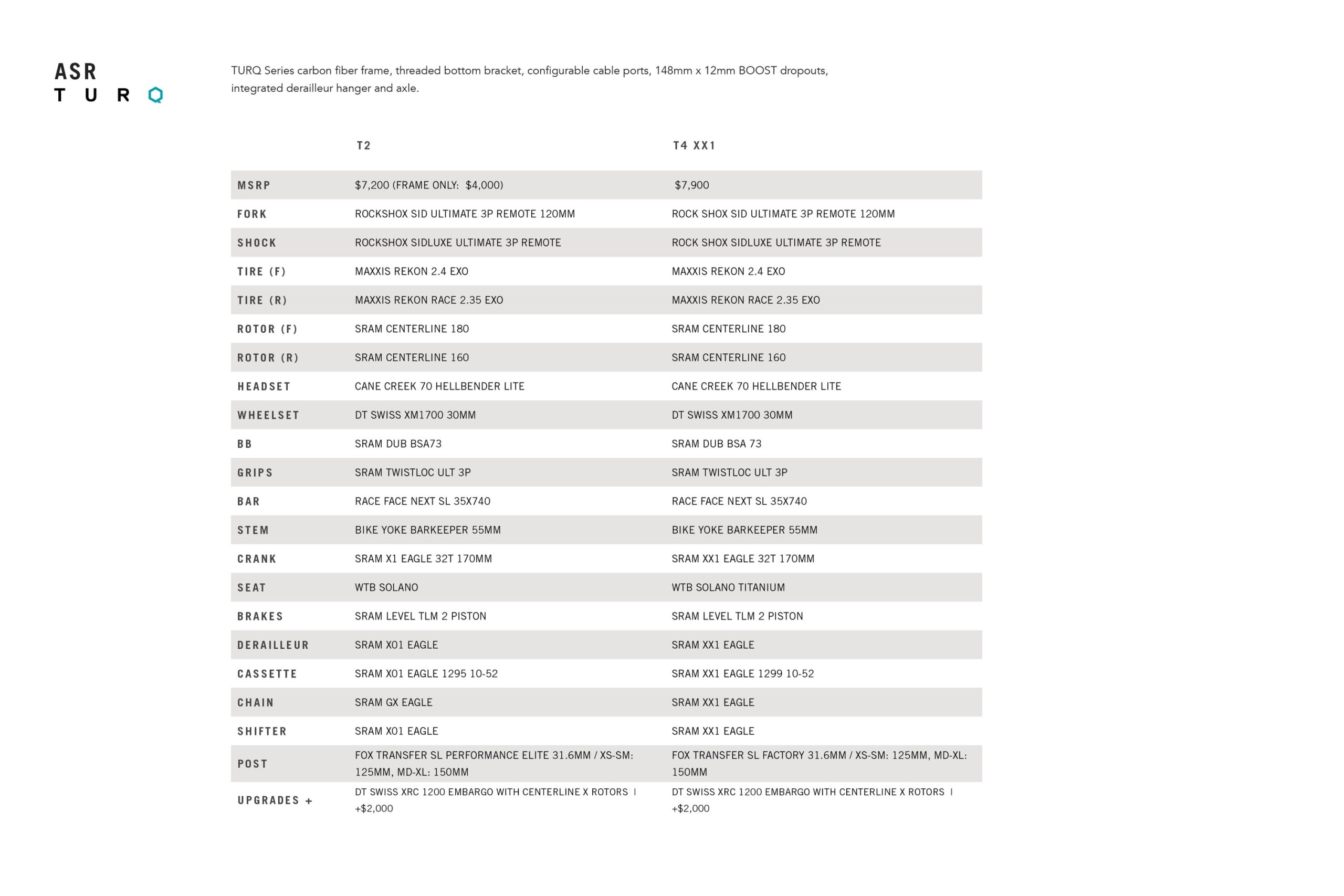
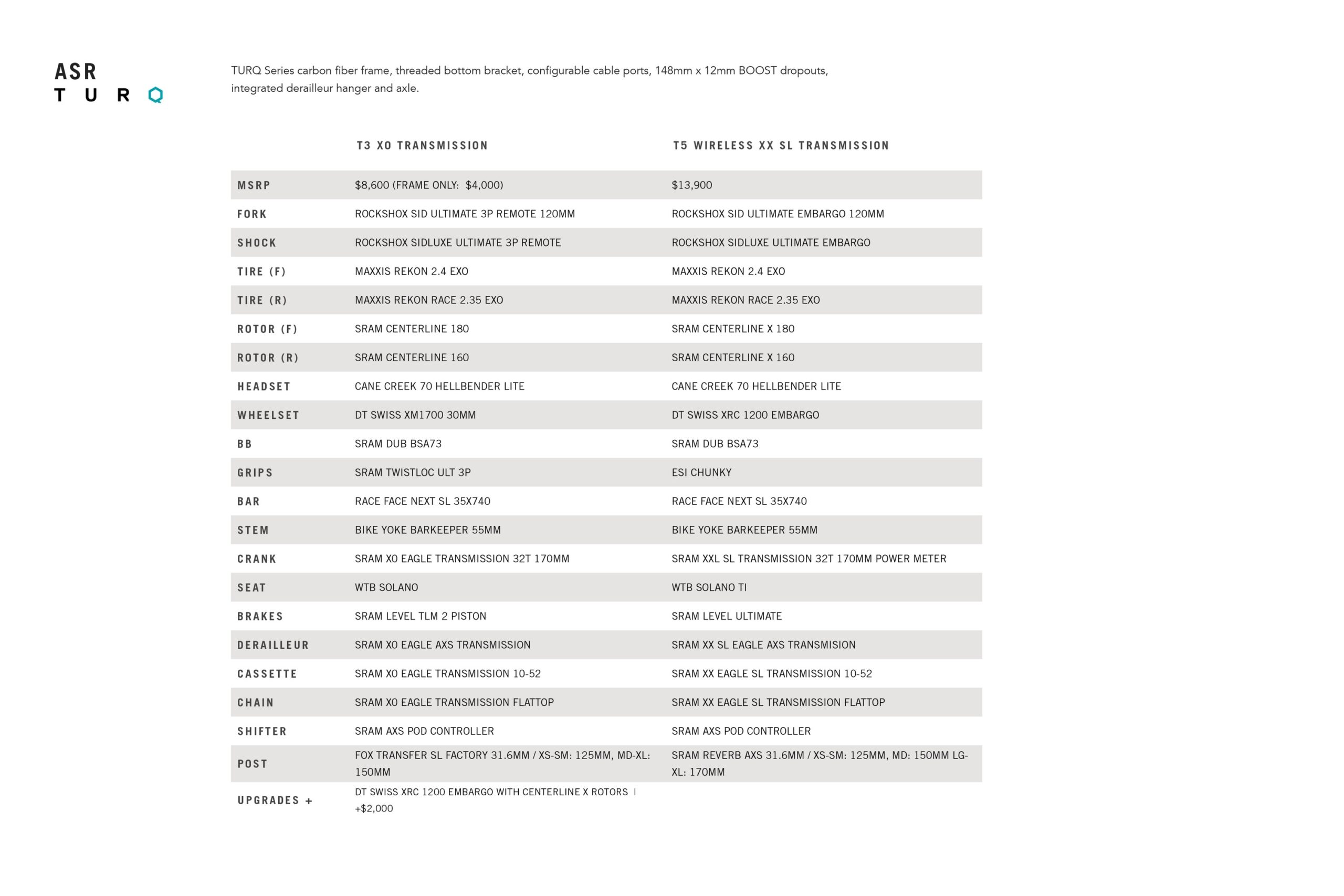
Moving down a step or two in price (and potentially lighter weight if you upgrade to the carbon wheels) are the T-Series builds. These include the T4 XX1 (mechanical) at $7,900, the T3 X0 Transmission at $8,600, and the T2 (X0 mechanical) at $7,200. Instead of Flight Attendant suspension, these builds all have RockShox SID/SIDLuxe Ultimate 3-position Twistloc remote suspension, come with lightweight Fox Transfer SL dropper posts, and DT Swiss XML 1700 wheels. Claimed weights for the T-Series Wired builds are all between 23.6 and 24.3 pounds (size M) and all drop below 23 pounds with the carbon wheel upgrade.
The C-Series builds are the most budget-friendly with the C3 GX Transmission at $6,600 and the C2 (GX mechanical) at $5,600. The C-Series builds come with RockShox Select level suspension (with the option to upgrade to Ultimate with Twistloc for $600), a Burgtec stem/handlebar combo, and DT Swiss M1900 wheels. The C2 and C3 builds are still pretty lightweight with claimed weights (size M) of 25.8 and 26 pounds, respectively.
Yeti ASR: First Rides
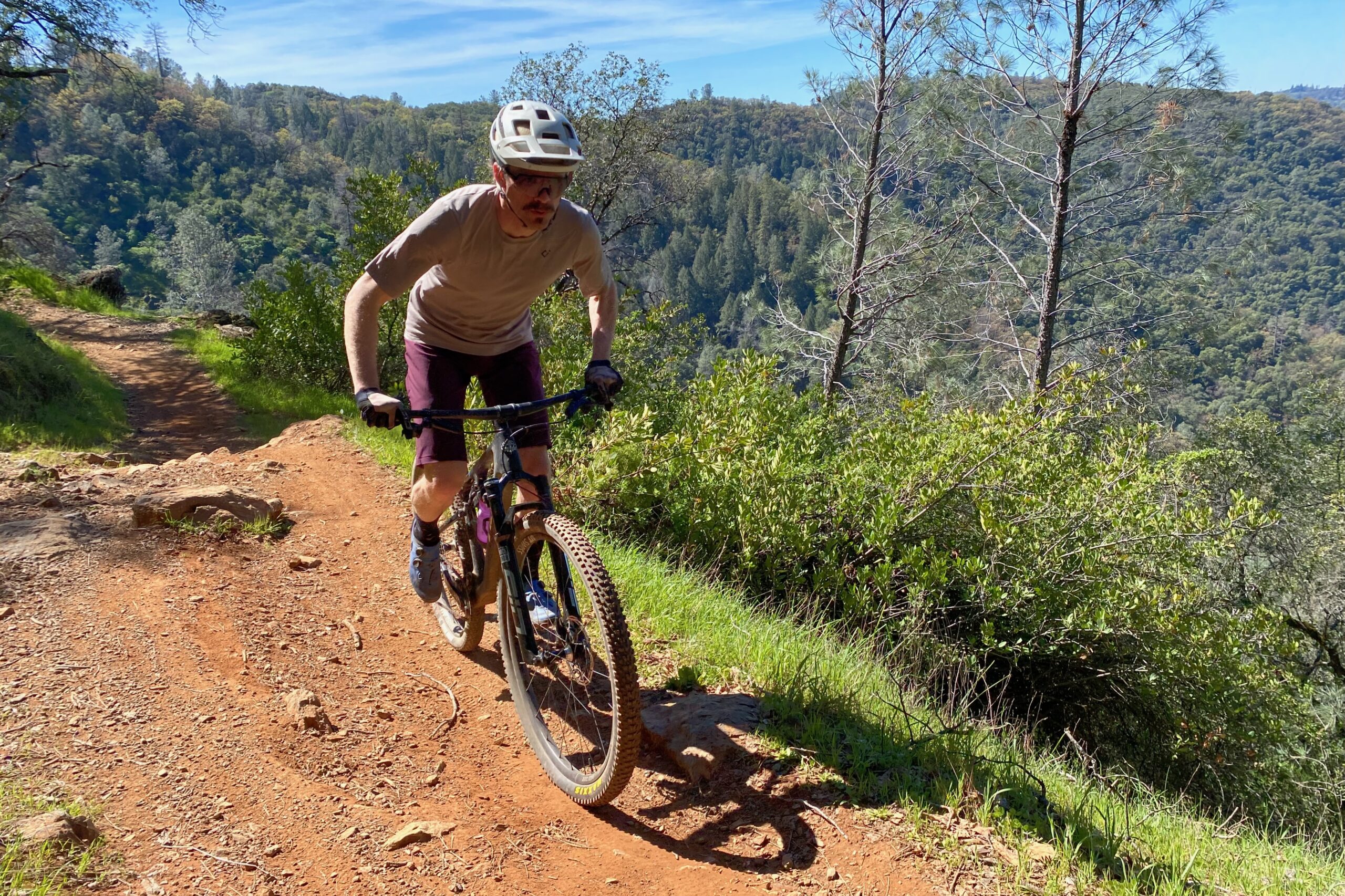
At this point, I’ve had the Yeti ASR T5 Ultimate XX SL Transmission for almost a month and I’ve had the chance to get several hundred miles on it. It’s still very much winter where I live in the mountains of California, but the foothills have thankfully offered up plenty of riding opportunities not too far from home.
The ASR arrived at my house packaged as it would be if you ordered a bike directly from the brand. Yeti now does consumer-direct sales in addition to the dealer sales that we’re all accustomed to. This has apparently been going on for over a year (I had no idea) and isn’t intended to replace dealer sales, but it is available as an option to those who may not have a dealer nearby. And, like consumer-direct brands, they ship the bikes to the consumer with minimal setup required.
All that really needed to be done to get it ride-ready was to attach the handlebar, orient the bar roll and controls, attach the front wheel, and check tire and suspension pressures. It couldn’t have been easier. The brake pads even come pre-bedded and the tires were set up tubeless with sealant. It’s worth mentioning here that while many brands are moving to lightweight one-piece bar/stem combos for bikes like this, Yeti has gone with separate pieces that allow you to adjust the bar roll for optimal fit and comfort or swap out the bar for a different model.
Of course, the Flight Attendant system takes a few minutes to set up, but it really isn’t too difficult and is obviously worth the time if you’re paying this much for the technology.
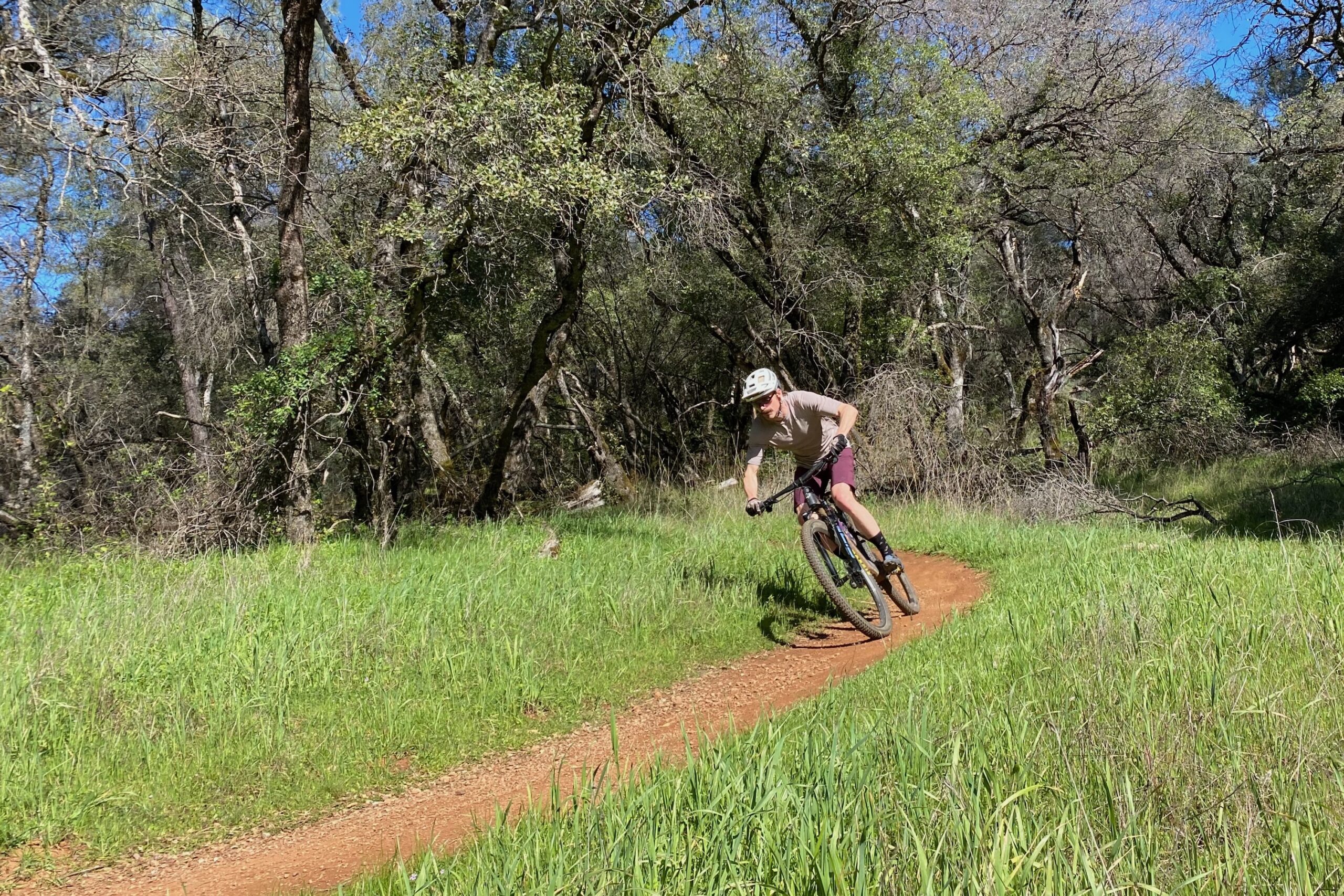
The ASR gives a really good first impression. It’s a very sharp-looking bike, and the T5 Ultimate build in particular is super stealthy with pops of silver on the downtube, fork and shock, and even the logos on the wheels. It’s also very lightweight at 23 pounds (measured) in a size large, and that’s with a 170mm AXS dropper and the added weight of the Flight Attendant batteries/components (approximately 220 grams).
Throwing a leg over the ASR and pushing down on the pedals, it felt like I had unlocked a cheat code or I was riding an SL electric bike. Both the low weight and efficiency of this bike simply make it feel very eager to get up and go. At the same time, the geometry doesn’t feel too racy, and I instantly felt comfortable. Of course, it does have a lower stack than a typical trail bike, for example, which results in a slightly more aggressive body position, but when settled into the shock’s recommended 30% sag, the BB height ends up being fairly low and provides a sense that you’re in the bike rather than precariously perched on top of it.
On the first ride, it became clear that the ASR is the type of weapon that I’ve been lacking in my arsenal. The outright speed of this bike is truly impressive, and like similar bikes that I’ve ridden, it feels like it’s urging you to stay on the gas, hammer over that next roller, and PR every climb. In fact, even with my so-so mid-winter fitness, I’ve been setting personal best times every ride on the ASR both up and down the hill on trails that I’ve ridden dozens if not hundreds of times.
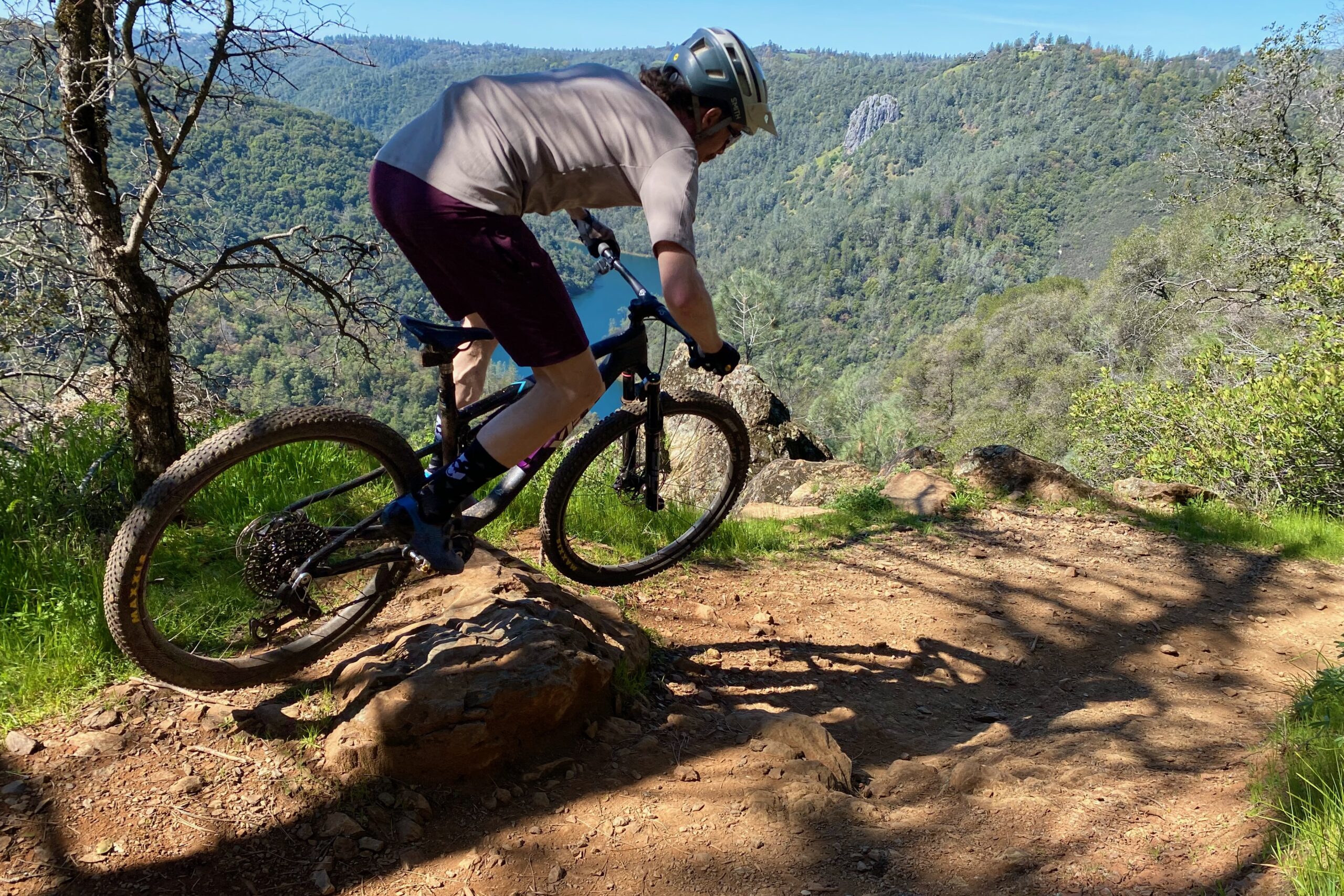
Cross-country geometry has been evolving, obviously, and based on my experience, Yeti struck a great balance with the design of this bike. While many super light, efficiency-focused race bikes have twitchy, nervous handling or feel a little sketchy when brought up to speed, the ASR feels much more composed than I was expecting, whether bombing a fire road or slashing down bermed flow trails. Instead of feeling like you’re going fast but on the edge of control, the ASR’s composure provides the confidence to push it harder than I would have thought. While most of the geometry numbers, HTA, STA, reach, and wheelbase, are certainly contemporary for the category, it’s really the low bottom bracket that feels like it’s working its magic here.
And, despite its light weight and carefully curated selection of lightweight components, I’ve been really impressed by how not-fragile the ASR feels. I’ve been riding this bike as hard as I would my 30-pound trail bike on the same terrain and it hasn’t felt flimsy or like anything is going to break. Of course, I did flat the rear tire a couple days ago, but that was completely my fault. I also applaud many of their spec choices, but I particularly like the fact that they’ve gone with 30mm inner-width wheels/rims across all the complete builds. The added rim width works better with wider tires, like the 2.4s that come on the ASR, and does help improve the ride quality and traction. And, the soon-to-be-released DT Swiss XRC 1200 wheels are a thing of beauty too.
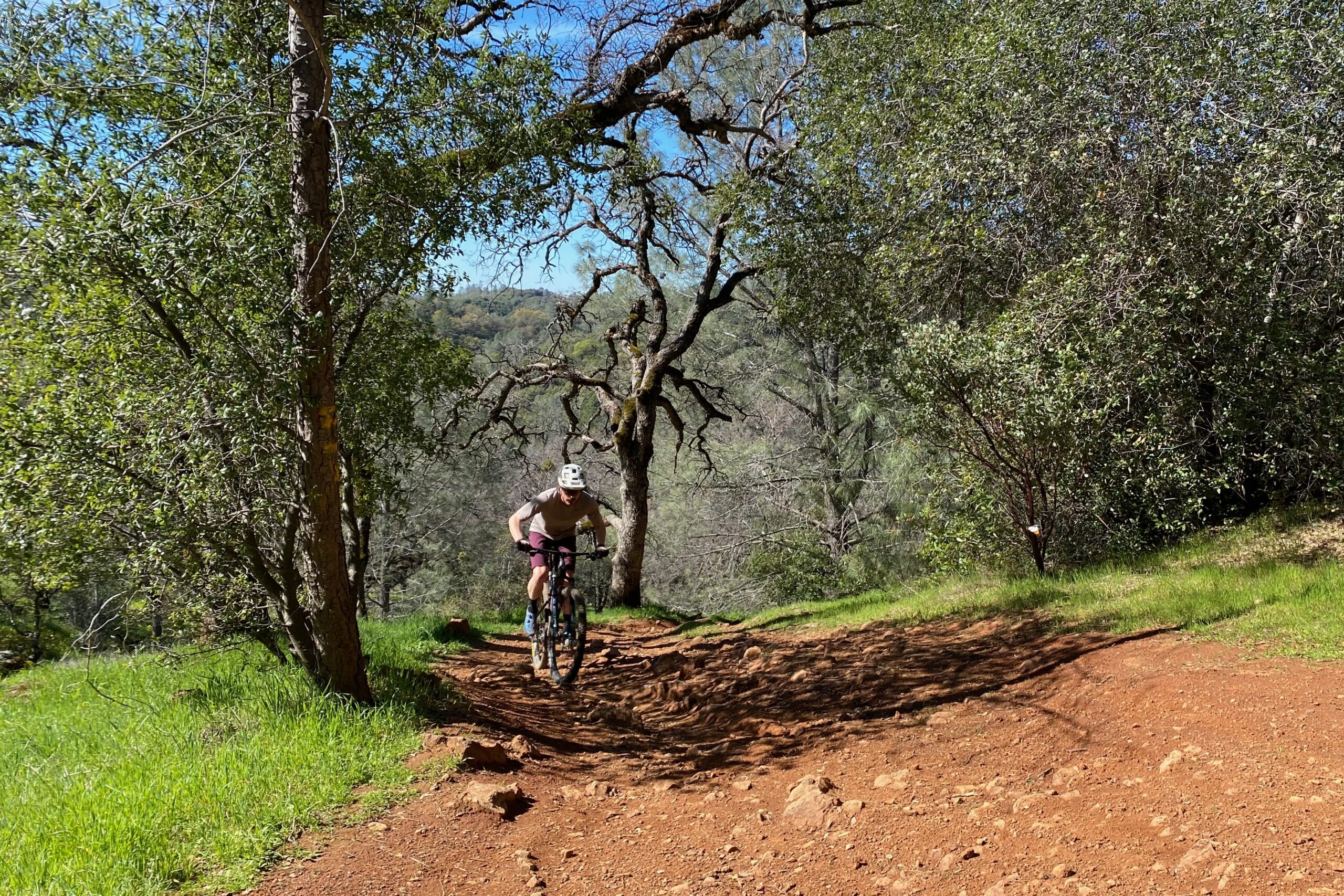
I’ll cover Flight Attendant in more detail below but the suspension performance has been impressive. In the Open position, there is a tiny bit of pedal bob, but barely enough to even notice unless you’re looking for it, and small bump compliance and climbing traction are excellent, even with the super low-profile tread of the Rekon Race rear tire. Switching it to the Pedal position, suspension movement is virtually non-existent under power while riding smooth surfaces but there’s enough give to still hook up well over the chunky stuff. On the descents, the front and rear suspension have a nicely balanced, supple feel, easily soaking up small bumps and handling bigger hits surprisingly well. Despite running 30% sag in the rear shock and riding some sketchy lines outside of the ASR’s wheelhouse, I’ve somehow managed to avoid any harsh bottom-outs while still getting full travel. The traction carries over here as well, and even with proper XC tires the overall level of grip has been very solid.
What about Flight Attendant?
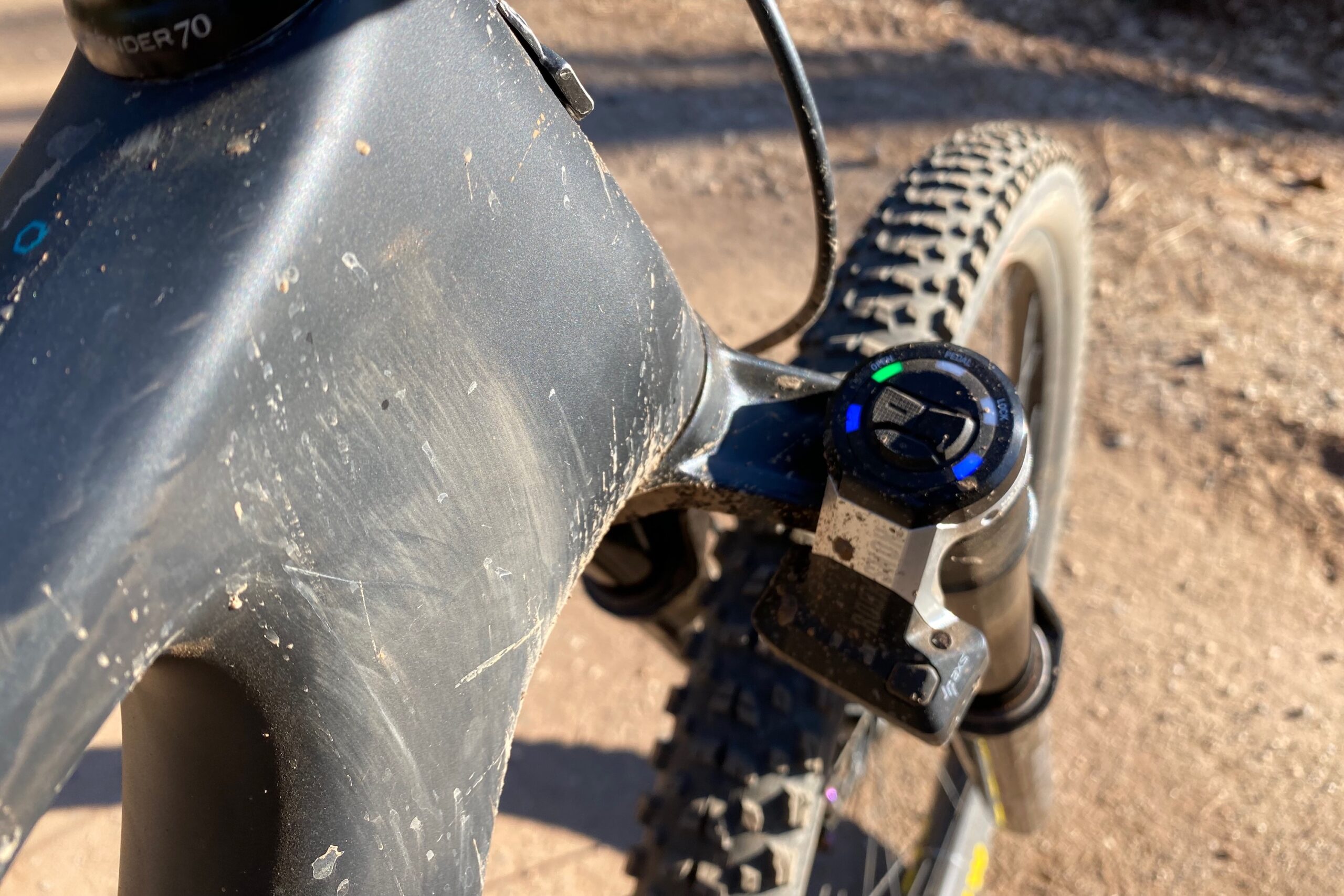
The new XC Flight Attendant could be an entire review on its own, but instead of boring people to death, I’ll try and keep my impressions brief. You can also learn more about it in our launch article from last week if you want more info. And, just to get it out of the way, there are a total of seven batteries on the ASR! There are four AXS batteries (derailleur, dropper, fork, and shock), two coin cell batteries in the shifter pods, and one more in the Quarq power meter.
The new Flight Attendant is undoubtedly some trick new technology, and while it has been available for a while on other RockShox models, I think cross-country is the most logical application for it. Once set up and everything is paired, essentially all you have to do is ride and the system learns and adapts to your riding while making changes to the modes of both the front and rear suspension as you go. This saves the rider from constantly needing to toggle between settings and aims to ensure that you’re in the most efficient shock setting based on your power output and a number of other factors. You also have the option to turn it off and wirelessly shift through the settings using the AXS Pod (which is pretty slick in and of itself).
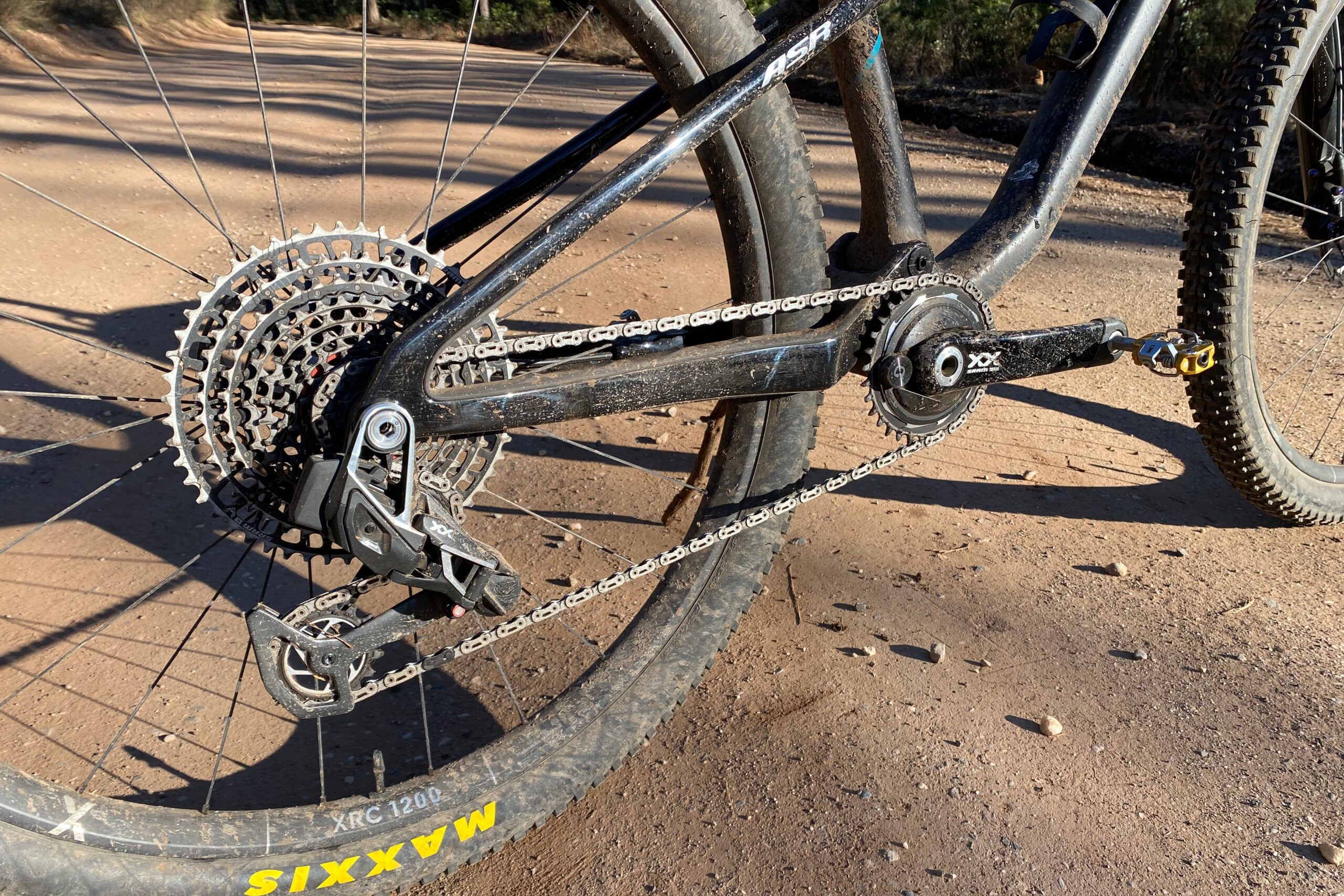
I’ll admit that I was initially slightly annoyed by the Flight Attendant system. It shifts much more frequently than I would on my own, it makes a little noise every time the setting changes, and I felt like I wanted to be more in control of the settings. So, for the first few rides, I actually just turned it off and changed the settings myself, because the ASR pedals amazingly well already and I can actually see what’s coming on the trail and make changes accordingly.
Eventually, I figured it was time to give it a chance, so I turned it back on and let it do its thing. Turns out, it works pretty darn well. While it sometimes feels a tad reactive and maybe a few milliseconds late to open up the suspension when hitting obstacles in the trail, it undoubtedly adds a level of pedaling efficiency that I wouldn’t on my own. While I probably wouldn’t leave it on all day, every day, I can see it being very useful in racing scenarios where you’re breathing through your eyeballs and can’t think clearly enough to make suspension adjustments but could benefit from the marginal efficiency gains it promises.
Does the ASR need Flight Attendant? No, not really, but sure, why not? To be honest, the ASR pedals incredibly well in the open position but firming up the rear suspension definitely adds some efficiency when you’re putting down maximum effort up a climb or in a sprint. Of course, you can change settings manually with the non-Flight Attendant Twistloc setup offered on the other T-Series builds (or as an upgrade on the C-Series models), but Flight Attendant makes it so you don’t even have to think about it. Whether or not it’s worth the added cost is completely up to you, but it’s pretty freaking cool.
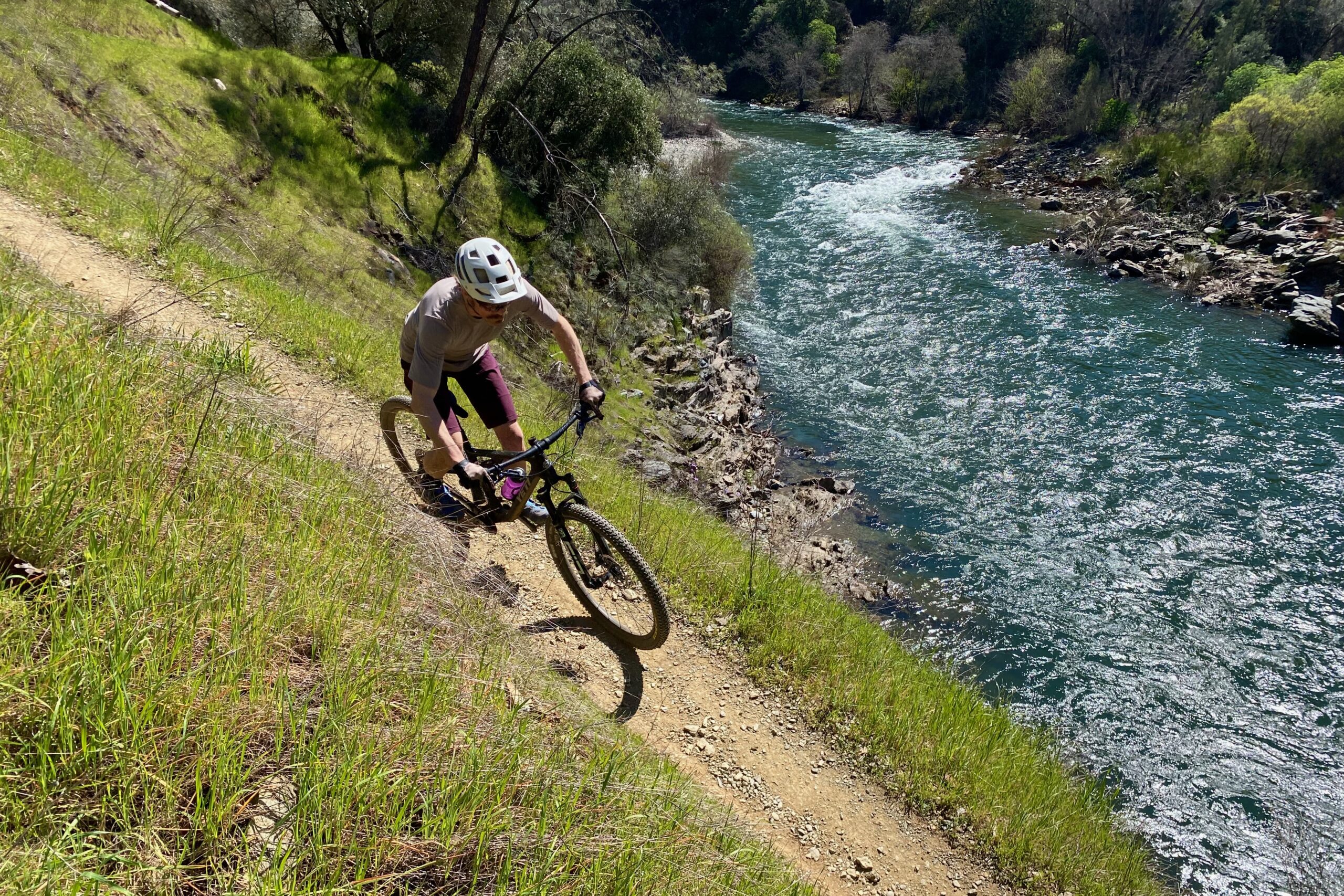
In Closing
I’ve only been riding the new Yeti ASR for a few weeks now, but if you’ve read this far, then you know that my initial impressions have been very positive. It’s clear that Yeti put an enormous amount of time, effort, and resources into this bike to make it a contender on the world stage or at your local races. The ASR is available now at your local Yeti dealer, select online retailers, and direct from Yeti.
I’ll be putting a lot more time on the Yeti ASR over the next couple of months, so be on the lookout for a long-term review later this summer. And, who knows, maybe we’ll be seeing them between the tape at World Cups this year too.

